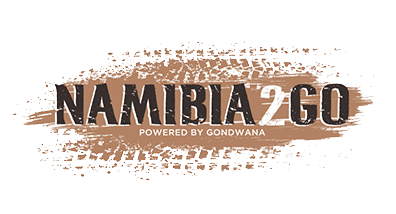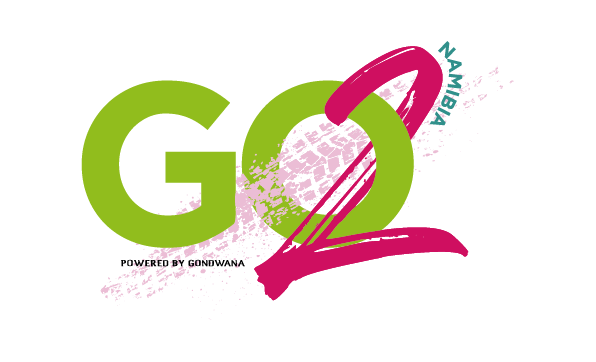Their origins steeped in mystery, the wild horses in the Namib Desert have captured imaginations and touched hearts. These resilient animals have survived in the desert for more than a century and over the years have become a major tourist attraction in southern Namibia.
The book ‘Wild Horses in the Namib Desert’ (now out-of-print) is the outcome of a collaboration, revealing the little-known history and behaviour of the wild horse population. Manni Goldbeck sheds light on the horses’ origins, taking the reader back to the tumultuous time of World War l and exploring the more plausible theories, while Telané Greyling (PhD Zoology) shares her knowledge of the intriguing behaviour of the Namib horses gleaned from her many years of research and life amongst the horses. Freelance writer, Ron Swilling, created a text from the material giving it a breath of life. Finally, from the love for the horse and all things wild, the book was born.
An equine biography of the Namib wild horses, the book traces the beginnings of Equus groups on the sub-continent, following their journey over time to Namibia and the present day.
Join us every Sunday as we share the wild horses’ journey with you.
CHAPTER 1 cont . . .
Return to freedom
Onto the southern tip of Africa
Horses only appeared in southern Africa in the seventeenth century ‘when Holland was mistress of the seas’. The Cape of Good Hope served as a re- provisioning station from 1652 for the Dutch East India Company to supply the ships rounding the tip of Africa en route from Europe to the East. The first horses were requested by Jan van Riebeeck who was commissioned to establish the station, and who continually argued that his biggest hindrance was the shortage of horses. ‘Horses are as necessary as bread in our mouths’, he wrote.
The horses which he received originated from South East Asia and had a strong Arabian-Persian influence, a small hardy breed familiar with drier climes. They were used as draught and riding animals for transport, field-work, protection, hunting and exploration of the new colony. The price of one horse was equivalent to that of five to eight large oxen. Interestingly, in the first hundred years, only 42 horses were imported into the country. In the late 1700s several horses from South America, England and North America reached the Cape. Subsequent importations included horses of Oriental and Spanish blood. In the 1800s English Thoroughbreds and Hackneys were introduced, improving the bloodline of the tough, surefooted breed that had come to be referred to as the Cape Horse, Afrikanische Pferd (later becoming known as the Boerperd), a fusion of the Javanese pony, Persians, English Thoroughbreds and Spanish Barbs. The Anglo-Boer War of 1899-1902 brought a large influx of horses to South Africa from Europe (mainly the United Kingdom), South America, Eastern Europe, Canada and Australia. It is told that of the 520 000 horses supplied to the English armed forces for the war, 350 000 perished. A horse memorial in Port Elizabeth, South Africa, stands as a tribute to the millions of horses that suffered and died in man’s quest for land and power.
One of the first references to horses crossing the Orange/Gariep River and entering present-day Namibia, and possibly also the first record of Europeans venturing into southern Namibia, appears in the records of Jacobus Coetsé Jansz’s hunting expedition of 1760. He writes how he was able to use his horse to chase down and kill a giraffe, which he described as being ‘a type of camel, albeit not the
proper one’.
The indigenous people had no term for ‘horse’ in their vocabulary. The Herero would later refer to their horses by their colour or use the word for the hartebeest antelope ‘oka-kambe’ or the zebra ‘ongoro’. As the South African colonial frontier expanded, it pushed people of Nama origin (the Khoikhoi) further north and eventually over the Orange River into Greater Namaqualand (southern Namibia). The Oorlam group, originally Khoikhoi in origin, had over time and with European influence changed their lifestyle and semi-nomadic existence, becoming traders, raiders and hunters, dependent on firearms, horses and gunpowder. (The term ‘Oorlam’ meaning ‘experienced people’ was possibly derived from the Malay term ‘Orang lama’.) They settled in Greater Namaqualand amongst the Nama in the 1790s bringing their horses into the country with them. In the late nineteenth century, another group, the Basters (people of mixed descent originating from the Cape settlers and indigenous Khoisan women), migrated north in search of land. They were followed by the Dorsland (Thirstland) trekkers, Dutch settlers who left South Africa not wanting to live under the British crown. European hunters and traders also entered the country to see what opportunities lay sparkling beyond the borders.
From the 1880s and with the arrival of the German settlers to the arid African land, there was a steady influx of horses from the Cape and Europe. Imperial German stud farms were established at the turn of the century, the main one, Nauchas, breeding with horses from England, Argentina, Germany and the Cape. The Cape horses were crossed with Thoroughbreds, Arabs and Hackneys bred for work and riding purposes, and for the German military troops, the Schutztruppe. In the 1904-1907 German-Nama/Herero wars, horses were imported from South Africa, Europe, Germany, Australia, Hungary and Argentina. A further influx of horses occurred at the onset of the diamond rush in the south-western corner of the country in 1908. The lure of riches drew many a hopeful prospector and the area saw a huge demand for workhorses in the diamond fields and racehorses for the town of Lüderitzbucht. More and more stud farms began to appear in German South West Africa over the years including Kubub, Duwisib, Claratal and Voigtland, and the Van Wyk stud farm in the Rehoboth area. The last large influx of Cape horses, brought in by the South African Union troops, was during the South West Africa Campaign at the time of World War l.
These two centuries of horse importation transformed southern Africa. Horses had a huge influence before the advent of the motor vehicle. Horses, guns and gunpowder dramatically changed southern Namibia, socially and environmentally. The lifestyle of the local people changed from semi-nomadic pastoralism to trading, hunting and raiding from horseback, and from self-sufficiency to a dependency on Western commodities. There was an enormous impact on the wildlife in the area, with rhino, elephant, giraffe and a number of antelope species becoming extinct in southern Namibia over time.
The power of the horse and the role it played in accelerating civilisation worldwide is often overlooked, yet the advancement of the modern age up until the twentieth century, in southern Africa as in Europe, was dependent on the use, abuse and exploitation of horses. Progress was ultimately carried on the horse’s back.
In the desolate sands of the Namib Desert, however, the fate of a group of horses veered off in a different direction.


.png)
.jpg)
.jpg)




.png)

SUBMIT YOUR COMMENT